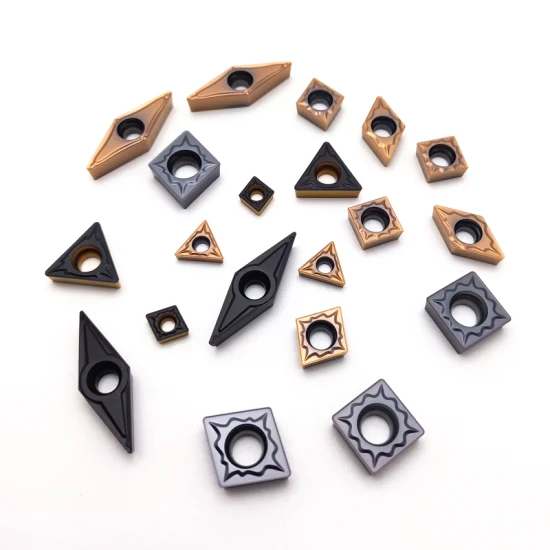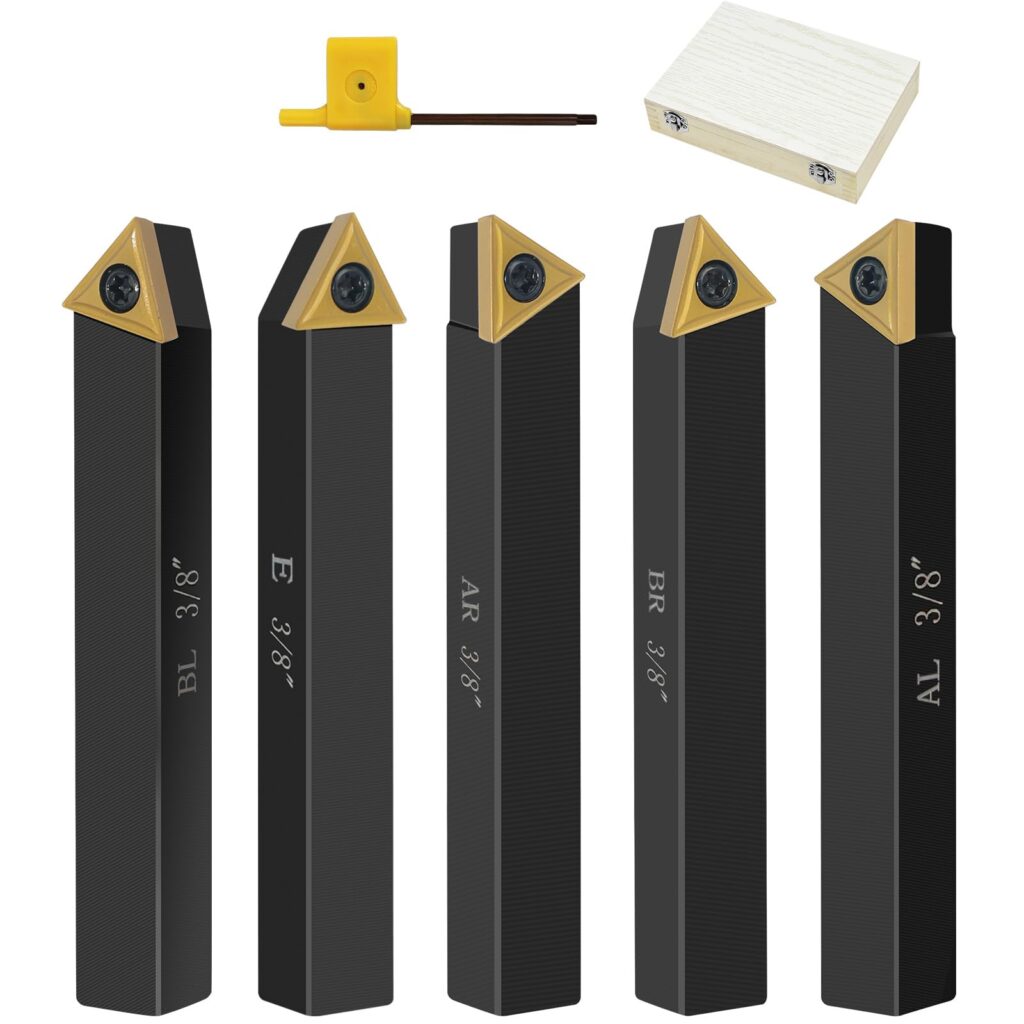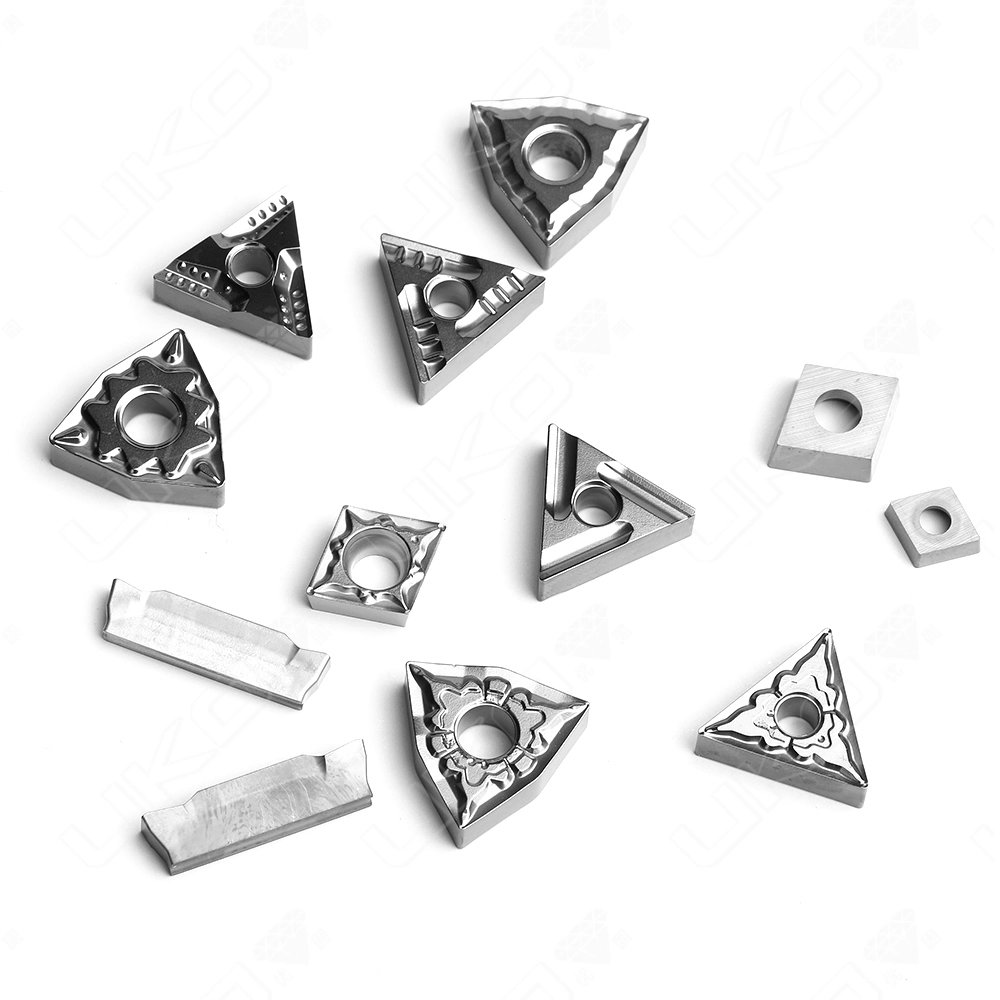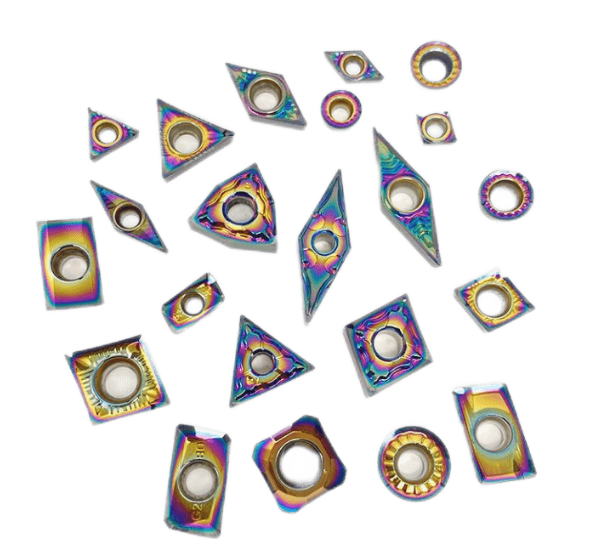If you are not using the latest cutting tools, it does not mean that there has not been any advancement. The use of cutting tools has increased in the past several years. It has become a crucial element of industries. Carbide turning inserts are one of the most frequently used cutting tools. If you are curious about carbide turning inserts, I recommend you stick to the end and read what information I have gathered.
What Are Carbide Inserts?

A carbide insert is a tool used for accurately machining metal. Steel, carbon steel, cast iron, alloys at high temperatures, and non-ferrous metals with easy surface finishes can all be cut using this machine. You can easily replace the grips since many different types, sizes, shapes, and colors are available.
composition
The coating that covers the insert in this cutting tool ensures a longer life span and a higher wear resistance. Inserts are made from various materials, but most frequently with carbide, micro-grain carbide, ceramic, cermet, diamond, cobalt, or silicon nitride. Titanium nitride, titanium carbonitride, titanium aluminium nitride, aluminium titanium nitride, aluminium oxide, chromium nitride, zirconium nitride, and diamond DLC are just some of the coatings currently in use.
Molecular mechanics tells us that it consists primarily of fine grains of carbide that have been bonded together by a binding metal, adding to the composite structure. It is usually a combination of tungsten carbide, titanium carbide, or tantalum carbide used as a cement, and these materials are used in various applications. In an industrial context, the terms “tungsten carbide” and “carbide” usually refer to composite materials, compounds created from combining these two materials.
history of carbide insert
About a century ago, a company known as Osram Lamp Works formulated its form of ceria carbide, which it wanted to use as an incandescent light bulb. It was launched for the first time to the general public by Krupp AG in Germany, under the trademark name “WIDIA,” in the early twenties as a cutting instrument.
Inserting Carbide
About a century ago, a company known as Osram Lamp Works formulated its form of ceria carbide, which it wanted to use as an incandescent light bulb. It was launched for the first time to the general public by Krupp AG in Germany, under the trademark name “WIDIA,” in the early twenties as a cutting instrument.
- Steel
Because the inserts are explicitly intended for use as inserts in steel surfacing operations. They can be run at faster clipping speeds and last longer than inserts used in various materials.
- Multimaterial
With these premium turn-carbide inserts, your tool can cut a wide range of materials and is not required to change.
Non-ferrous Material
These premium inserts are ideal for cutting aluminum, copper, brass, and other non-ferrous materials.
Cast Iron
Carbide insert for cast iron is made of abrasion-resistant carbide will last longer than inserts made of many different materials. Cast iron carbide inserts are made of an abrasion-resistant carbide, so their tool life is longer than inserts for other materials. Unlike the H series inserts, which can stick out from the holder to reach tight spaces on the workpiece with a negative rake, the K series inserts are the positive rake. Carbide insert for cast iron is commonly used for machining imperfectly round workpieces such as shafts with keyways since they were designed for semi-interrupted cutting conditions. You can install the inserts into the appropriate holder to begin using them.
Stainless Steel
Heat resistant and shaped for turning stainless steel specifically, these inserts will last longer than inserts for multiple materials.
Alloys
The inserts are not only heat-resistant and wear-resistant, but they also operate with outstanding performance when cutting super alloys such as titanium.
What are carbide lathe tools?

Before we proceed, you must also know about carbide lathe tool inserts. Among the many types of carbide lathe tool inserts, there are dozens of different types of instruments that we can make. Tungsten carbide is one of the most substantial inserts available. Combining tungsten and carbon, tungsten carbide is twice stronger than steel and twice as dense as steel, allowing the tool to make fast and efficient cuts.
In most cases, these tools are made from high carbon steel and have carbide tips. Most carbide lathe inserts are made from high carbon steel, and they have carbide tips. A hard cutting edge is provided by carbide when the tip is only made from carbide. This is because pure carbide is very fragile, despite its hardness, and therefore very brittle.
- Knowing indexable carbide inserts
Besides carbide turning inserts, are you aware of indexable carbide inserts? I’ll tell you more about them. It is generally using an insert cutter; the cutter’s body is made of steel and is machined in a way that allows the inserts to be automatically positioned accordingly. It is also used for assembling tool bodies, inserts, and machine tools and can be used to clamp the inserts on the bodies.
what is the identification code for?
Identifiable carbide inserts are marked with an identification code. By using the right system, you can identify the right tool using more than just a collection of letters and numbers.
Listed below are phrases corresponding to each of the letters or numbers in the identification code.
- Clamping Method
- Shape
- Holder
- Clearance Anglet
- Hand of Holder
- Height
- Width
- Length of Holder
- Length of Insert Cutting Edge
- Clamping method
The clamping method used to clamp the tuning tools differs according to the clamping type. Different clamping methods describe the process of securing the carbide insert, the shape of the tool, and the force or rigidity of clamping.
- Insert shape
It is currently possible to choose from ten different insert shapes, but we can say that most of them have a flaw that needs to be brought to light. There are differences between the various categories in the classification system, and these could be considered identifying features.
- Holder style
Using this code, we can describe the turning tool we are using. A wide variety of holders are available with different approach angles, making each holder different.
- the angle of the insert
A fourth letter denotes the clearance angle when inserting a part into a hole. Seven are available between the range of 0 degrees and 25 degrees of clearance angles.
- Tool holder hand
While working with a tool, it is essential to know whether the tool is left-handed, neutral (centered), or right-handed, as you will be using it differently.
- Shank height
A sixth code is found on the shank, which indicates its height. It most likely means that the shank is 15mm high if the sixth number is 15.
- Shank width
As the shank is considered a whole, the number seven refers to the length as a whole. This is the same as the height mentioned earlier.
- Length of holder
When it comes to selecting the correct carbide insert, knowing the length of the holder is crucial. There are different lengths according to each letter of the alphabet. There may not be many differences between the parts, but selecting the right one can make all the difference – or choosing the right part if your desired length isn’t available.
- The cutting edge of the insert
This last part of the Turning Tool ISO code determines a cutting insert’s length. The figure is measured in millimeters, so if the figure is 10, there are 10millimeters on the insert’s cutting edge.
HOW ARE CARBIDE INSERTS MADE?

making of carbide inserts
A quality insert can significantly impact the manufacturing productivity of any component, regardless of its size, material or design. By choosing the correct insert grade for your specific machining operation, you’ll stay competitive. Without inserts, cutting metal would be impossible. Among the hardest materials are the inserts. So let’s see how the inserts are created.
- Step 1
Inserts may be made of tungsten carbide and/or cobalt in different combinations. Powders are mixed in the correct proportions for each order.
- Step 2
Dry raw materials are treated with an ethanol solution and water during processing. Therefore, we are left with a grey slurry.
- Step 3
For quality control, dried samples of the slurry are sent to the laboratory for analysis after drying.
- Step 4
The powder is transported in 100 kg barrels in the pressing machines to make the inserts. The operator inputs the order number, pressing tool, and mould specific to the insert to be pressed into the computer, and the pressing process begins. A press tool starts pressing when the powder cavity is filled in. Inserts are pressed with 12 tons of pressure by the machine, and the inserts are weighed and controlled visually by the operator. These inserts are extremely fragile and capable of breaking easily at this point.
- Step 5
Heat must be applied to harden. this is accomplished by placing them in the oven action. There are at least a hundred thousand inserts that can be placed together at the same time. The powder of cemented carbide is heated to about 1,500 degrees Celsius for 13 hours before it is fused into the material known as cemented carbide, a material that has an extreme hardness. During the sintering process, the sintered insert shrinks to about half its size, which means that the pressed piece is only about half its size.
- Step 6
The insert is again ground to the proper thickness during yet another laboratory quality check to ensure it is of the highest possible standard. Cemented carbide is ground with industrial diamond, the hardest material in the world.
To obtain the perfect geometry and size for the insert, the insert is ground down even further.
- Step 7
After cleaning, the item is sent for the coating to ensure proper adhesion. During this stage, gloves must be worn to protect the inserts from grease or dust. A low-pressure oven is used to coat the trays, which are mounted on a rotating carousel. The trays acquire their distinct colours in this way.
- Step 8
You’re now finished. Under a microscope, samples are examined to ensure that each batch is of high quality.
- Step 9
A second examination and comparison of the inserts with the blueprints and batch order are performed before they are packaged. Lasers are used to mark the insert, and a grey box is labelled with the grade. Distribution now begins.
Pros
- The ability to cut at faster speeds allows the production to occur in a shorter amount of time.
- Even when the production is compressed, the cutting features remain intact.
- Compared to high-speed steel, the surface finishes will be vastly superior.
- The device is exceptionally suitable for handling highly corrosive materials and polymers, glass-filled plastics, and cast iron.
- It can handle high speeds despite its high heat tolerance.
- Wear resistance means long-term performance.
Cons
- The cost of high-speed steel tools is lower than that of solid carbide tools.
- Carbide tools or cutting tools that are carbide coated are complicated to sharpen or put an edge on
- HSS and carbides both have significantly lower tensile strength than carbon steel
- As a result of carbide’s tendency to create internal tension when extremely sharp cutting edges are used on carbide tools, the types and shapes of cutting edges are more limited than HSS.
- As a result of the more brittle nature of carbide tools, they can break more often than HSS tools.
consideration for the right carbide inserts
To make the right choice regarding carbide inserts, you must consider many factors. Select insert geometry, insert grade, shape (nose angle), size, nose radius, and entry angle carefully to achieve reasonable chip control and machining performance.
- Choose insert geometry
A turning geometry can be divided into three basic types optimized for different operations such as finishing, medium, and roughing.
- Roughing
The combination of high feed rate and depth of cut results in an increased depth of cut. This is suitable for operations requiring the highest degree of edge security.
- Medium
It includes operations that range from medium roughing to light roughing. You can choose something from a wide range of feed rates and depth of cut combinations.
- Finishing
The combination of low feed rates and shallow depths of cut is ideal for shallow depths of cut. Applications that require low cutting force will benefit from this combination.
- Finishing
The combination of low feed rates and shallow depths of cut is ideal for shallow depths of cut. Applications that require low cutting force will benefit from this combination.
- Select the grade
Grades of inserts are selected primarily based on:
- The ISO P, M, K, N, S, H components
- indicate the method (finishing, medium, roughing)
- Manufacturing conditions (good, average, difficult)
- Choose an insert shape
I believe that you should choose the shape of the insert according to the amount of accessibility the tool requires at the point of entry. Selecting the smallest possible nose angle is recommended to provide insert strength and reliability. The margin for error has to be weighed against the variety of cuts made.
It requires more machine power and is more likely to vibrate more strongly when the nose angle is large. In addition to having a smaller nose angle, a minor cutting edge engagement can also make it more heat-sensitive as both of these things are weaker and more sensitive to heat.
- Choosing a size
Adapting the insert size to the application’s requirements, as well as the space available for the cutting tool, should be considered.
The stability increases when the insert has a larger size. If you are going to be doing heavy machining, then the insert size should usually be over I.C. 25 mm (1 inch). In many cases, the size of a finished product can be reduced when it is finished.
- Machining material
The purpose of carbide inserts is to enable the workpiece to be machined efficiently.
In this sense, it is of utmost importance to make sure that you choose the right tool for the purpose you have in mind. Several materials are available to us, including Aluminum, Bronze, Stainless steel, Cast Iron, and many others.
- Machining material
The purpose of carbide inserts is to enable the workpiece to be machined efficiently.
In this sense, it is of utmost importance to make sure that you choose the right tool for the purpose you have in mind. Several materials are available to us, including Aluminum, Bronze, Stainless steel, Cast Iron, and many others.
carbide inserts: choosing factors

The following elements are among the essential things you need to consider when searching for the proper manufacturer of carbide turning inserts?
- Expertise
Getting your carbide turning inserts, carbide insert for cast iron, carbide lathe tool inserts, or indexable carbide inserts from a minor or newly introduced brand may be risky as it can be the wrong choice. If you have any concerns about a company’s experience in the field, always go for one with a high level of expertise.
An advantage of having a manufacturer who has years of experience is that you are confident you will get the correct type of tool for your particular needs.
- High-Tech
Advanced technology is another crucial factor to consider. To manufacture this type of tool, the ideal company for manufacturing carbide inserts should have excellent machinery and facilities.
If you can imagine a manufacturer that invests reasonable sums of money into research and development, has skilled workers, and a complete CNC machine shop, you are pretty close to what you are thinking.
- Diversification
Shapes, sizes, or designs of carbide inserts that you can use to address various applications. In addition to finding out which type is most appropriate for your specific application requirements, this tool enables you to identify which type is cost-effective quickly. Ascertaining that a manufacturer can produce a wide range of products, such as routers and power supplies, has several advantages, as it makes ordering much more accessible.
- Response Time
To ensure that all other factors are equal, you should know how long the average lead time is for a manufacturer to produce carbide inserts.
It is essential to find a company that can provide dependable and high-quality services through its supply chain. To ensure rapid delivery times and guarantee a high standard of service, this particular supply chain is crucial.
- Quality
Carbide insert manufacturers, in general, need to comply with specific quality standards based on the same target market they are targeting.
A company that provides quality assurance services should always be able to demonstrate that it adheres to all the necessary standards and complies with them correctly.
- Offerings
To achieve proper carbide insert performance, it is necessary to use various machines and thus require multiple settings to achieve a quality carbide insert.
Therefore, you may choose a trustworthy manufacturer and be prepared to offer relevant advice on the working procedure of these tools in the form of well-informed suggestions.
- Insert Shape
There are numerous designs, sizes, shapes, and thicknesses available in carbide inserts to give manufacturers more options.
It is possible to find 16 types of standard indexable inserts on the market.
To maximize the edge strength, it could be shaped roundly. The shape of the sharpener can also be octagonal so that you can merge several edge types into one to increase the number of sharpening edges after a single sharpening edge wears out. A capital letter is associated with each of these shapes.
- Clearances
Additionally, it can be referred to as the value of the relief angle.
The angles below represent the difference between 90° measured in a plane perpendicular to the cutting edge and derived from the angle between the insert’s top surface and the flank.
A few carbide inserts have a drafted face on their walls.
However, clearance prevents the walls of the carbide insert from rubbing against the part, thereby reducing the chances of having inferior machining.
However, when rough machining is in operation, it is more common to use turning inserts with a 0° clearance angle.
- Tolerance
When an insert is milled during the machining process, one can think of precision as the amount of material removed from it.
It has been shown that carbide inserts can be indexed within fourteen different tolerance classes.
A, B, and T indicate tolerances on dimensions concerning the nominal value through a square bracket.
A carbide insert’s diameter A indicates the insert’s little inscribed circle (I.C.).
However, the thickness of the insert is measured by its T dimension, which refers to its thickness.
- Size
Using this definition as a practical example, it is a numerical value representing the length of the cutting edge of the carbide insert.
Also, it is indicated by a number based on a one- or two-digit number that indicates the size of the outlined circle.
- Dimensions
It is possible to calculate the thickness of the insert by adjusting this value.
This position is indicated by a significant number that appears on the left-hand side of the carbide insert. It shows the thickness of the insert in sixteenths of an inch.
You can still utilize a number up to one decimal if the number of sixteenths of an inch used for the thickness is a whole number.
Custom Carbide Inserts
Many China carbide inserts suppliers company specializes in designing and fabricating custom carbide inserts for their customers to meet their specific demands. Among the custom service details included in our services are as follows:
- You can create your custom geometry for the steel inserts. If you design your geometry of carbide inserts, the mold of these inserts is tailored specifically for your geometry, and you will receive them exclusively from us.
- Choosing the suitable material for carbide inserts to fit your needs. Some of the current grades of carbide may not meet the special machining requirements that you have with our current grades of carbide, in which case you can speak to an engineer in detail to design one particular carbide grade that can meet your needs.
Conclusion
Powdered carbide is sintered to produce a carbide insert to give the inserts their shape. The insert is then baked to use various coating methods to coat the carbide substrate with complex wearing layers that are only a few microns thick. Depending on the coatings, the surface appears either gold or black. Some have layers upon layers of coatings. Carbide brands maintain the process of coating their carbide products as a closely guarded secret, which provides certain advantages for use with certain materials.
Choosing the fitting carbide turning inserts or indexable carbide inserts can be accomplished by a task of this magnitude; it requires considerable effort, but if you consider all the mentioned factors, you can make it relatively straightforward. Make sure to select carbide inserts according to their intended use, whether it is milling, threading, or anything else you may require. It would be best if you did not focus on the brand image of the insert since it will not affect the performance of the inserts.


